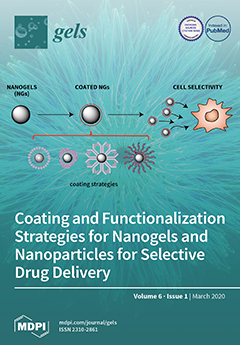The physical principle underlying the familiar condensation transition from vapor to liquid is the competition between the energetic tendency to condense owing to attractive forces among molecules of the fluid and the entropic tendency to disperse toward the maximum volume available as limited only by the walls of the container. Van der Waals incorporated this principle into his equation of state and was thus able to explain the discontinuous nature of condensation as the result of instability of intermediate states. The volume phase transition of gels, also discontinuous in its sharpest manifestation, can be understood similarly, as a competition between net free energy attraction of polymer segments and purely entropic dissolution into a maximum allowed volume. Viewed in this way, the gel phase transition would require nothing more to describe it than van der Waals’ original equation of state (with osmotic pressure
replacing pressure P). But the polymer segments in a gel are networked by cross-links, and a consequent restoring force prevents complete dissolution. Like a solid material, and unlike a van der Waals fluid, a fully swollen gel possesses an intrinsic volume of its own. Although all thermodynamic descriptions of gel behavior contain an elastic component, frequently in the form of Flory-style rubber theory, the resulting isotherms usually have the same general appearance as van der Waals isotherms for fluids, so it is not clear whether the solid-like aspect of gels, that is, their intrinsic volume and shape, adds any fundamental physics to the volume phase transition of gels beyond what van der Waals already knew. To address this question, we have constructed a universal chemical potential for gels that captures the volume transition while containing no quantities specific to any particular gel. In this sense, it is analogous to the van der Waals theory of fluids in its universal form, but although it incorporates the van der Waals universal equation of state, it also contains a network elasticity component, not based on Flory theory but instead on a nonlinear Langevin model, that restricts the radius of a fully swollen spherical gel to a solid-like finite universal value of unity, transitioning to a value less than unity when the gel collapses. A new family of isotherms arises, not present in a preponderately van der Waals analysis, namely, profiles of gel density as a function of location in the gel. There is an abrupt onset of large amplitude density fluctuations in the gel at a critical temperature. Then, at a second critical temperature, the entire swollen gel collapses to a high-density phase.
Full article






